Card appearance and thoughts
Let's cut right to the chase and give you the lowdown on what exactly a Radeon X800 GT is and why it should be a decent performer in the £100-£120 pricing bracket. As savvy readers will already know, and oversimplifying it somewhat, the X850-series of ATI GPUs utilise four quads that give rise to a 16-pipeline rendering setup. They ally this to a 256-bit memory interface that usually has GDDR3 memory running at high speeds. Couple impressive bandwidth with decent levels of shading power available through 6 vertex shaders and the aforementioned 16 pixel shaders and you have the makings of a current top-end card.Now, something has to give in the transition from £250 SKU right on down to £100 SKU, right?. That kind of pricing is currently reflected by ATI's X700-series, which cuts the rendering pipelines and memory interface in half, that is, 8 rendering pipelines and a 128-bit memory interface that's usually fed off GDDR memory, although ATI steadfastedly keeps the 6 vertex shaders present on the high-end models.
The X800 GT, and the name itself implies just what it's architected to be up against, also uses a two-quad rendering setup but adds performance by keeping the X800-series' 256-bit memory interface, making it, on paper, especially suited to reasonable levels of antialiasing and anisotropic filtering. It also retains the X800's 6 vertex shaders and will be available in both 128MB- and 256MB-equipped models. The reason why it exists today is down to yields, pure and simple. ATI and NVIDIA wish that all wafers containing high-end cores would be perfect, that is, all cores run at full speed and with the desired number of pipelines.
That simply is not how it happens, with yields often quite low for cutting-edge GPUs. What you then get, over a period of time, is a reasonable number of not-quite-perfect cores that cannot be used in X850 or GeForce 6800 Ultra parts. Here's where the X800 GT comes in, as it uses only a two-quad rendering setup humming along at a decent speed. What we can also infer, though, is that X800 GT cores won't be around forever, as they're offshoots from cores that didn't quite make A-grade status, so it's a limited release to some degree.
SAPPHIRE's a prominent ATI board partner and sent us its X800 GT Hybrid 256MB card for evaluation.
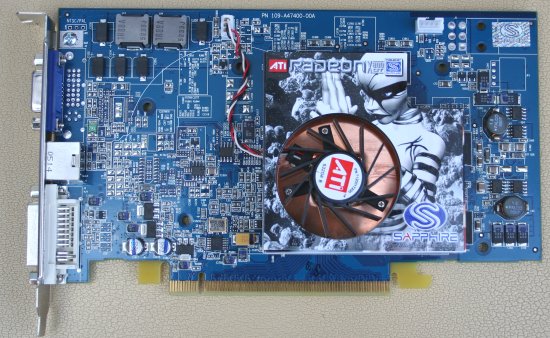
Just underneath the dinky cooler you can see the PCI-Express interface. Both 128MB and 256MB variants will only be available with the PCIe interface at launch. AGP-equipped models are likely to follow in the near future, but, according to SAPPHIRE, it's just a TBA (To Be Announced) at present.
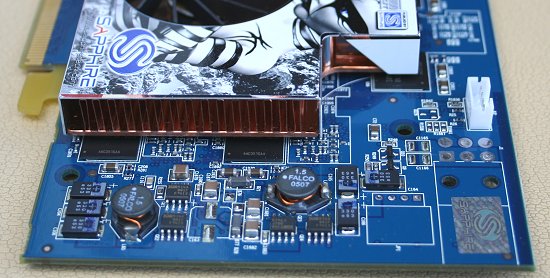
The X800 GT is based on a 130nm manufacturing process and the PCI-Express slot provides enough juice for the card not to require any external power. A lack of a 6-pin PCIe connector tells us, indirectly, that we're dealing with a midrange GPU. SAPPHIRE adds a small-ish copper cooler on which sits a 40mm fan. The heatsink had a generous amount of TIM between it and the underlying core. Fans of graphics card nudity can take a look at the bare card here. In terms of CrossFire, ATI's multi-GPU technology, SAPPHIRE's X800 GT will not be supporting it. Why? Well, put simply, ATI's master cards run with a 16-pipeline setup, and rendering with an accompanying 8-pipe X800 GT reduces multi-GPU performance to the speed of the slowest card. Things may look better when chipsets are released with 2 x16 PCIe lanes, however.
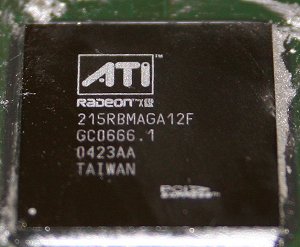
Removing the cooler and cleaning off the TIM from the core, there's not a whole lot one can tell about the GPU's origins. We'd hoped to see an R480 etching, suggesting that it's a core that didn't quite make X850-class' four-quad standard, thereby opening up, potentially, the ability to unlock dormant rendering pipes. What we do know for sure, though, is that it runs at a reasonably lofty 475MHz. Rather, this core has been derived from the R423 range (X800 series).

No X800 XL-like twin DVI ports here. It's the usual trio of VGA, S-Video (TV-Out), and a single DVI port.
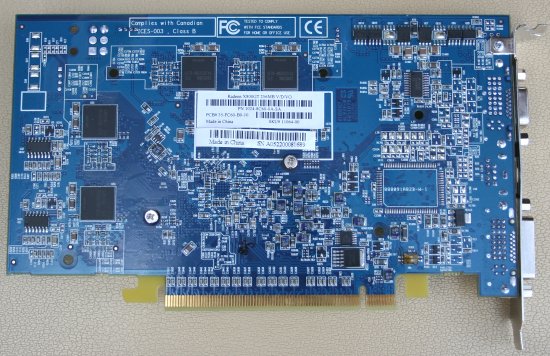
SAPPHIRE's aiming this particular X800 GT Hybrid 256MB card at users who want a no-frills option at the most competitive price. £110, the retail price for this model, doesn't buy you ATI's venerable Rage Theater ASIC, but it does buy you 256MB of GDDR3 RAM.
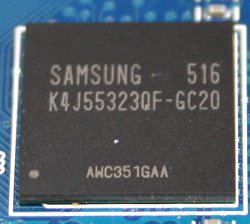
A total of 8 256Mbit GDDR3 chips, with 4 on either side, are rated at an effective 1000MHz. SAPPHIRE decides to run this card's clocks at 475MHz core and 980MHz RAM, suggesting that overclocking may well be fun. What's intriguing, however, is that the 128MB version, priced at just £10 less, utilises plain GDDR memory running at only 700MHz. Not only does the 256MB edition enjoy a double-sized framebuffer that will come into play at higher resolutions and/or with image enhancement, but it's also run 40% faster. Weird, huh?









